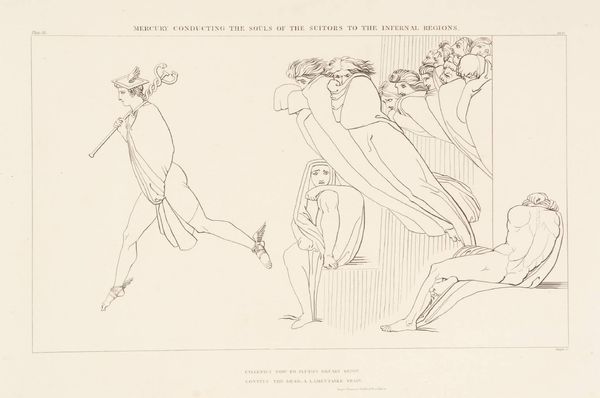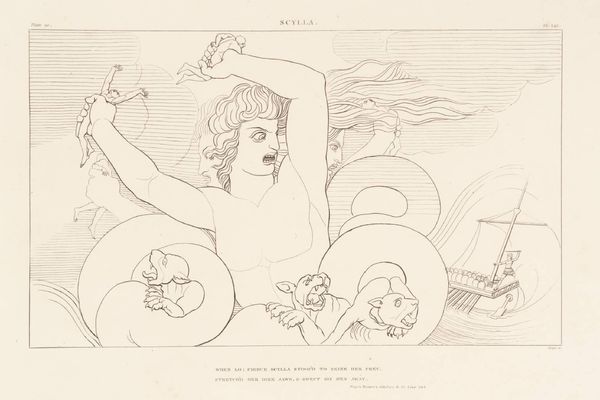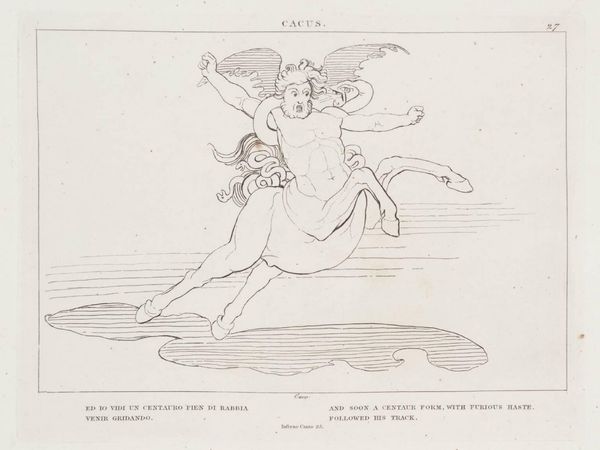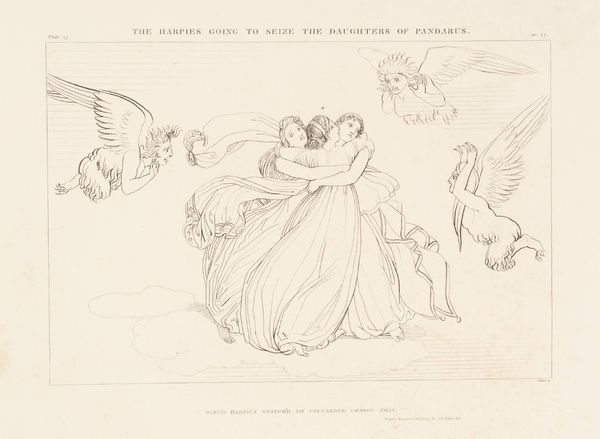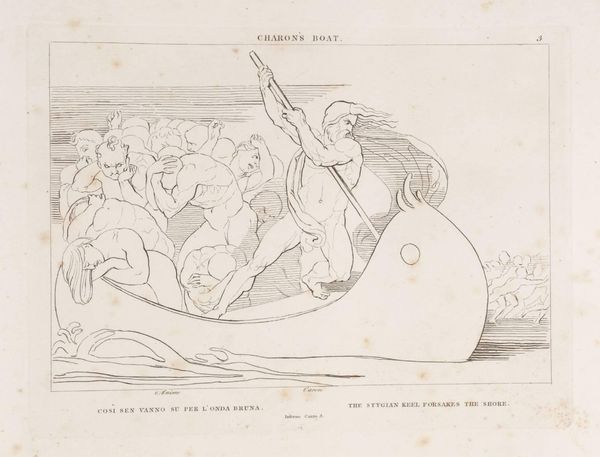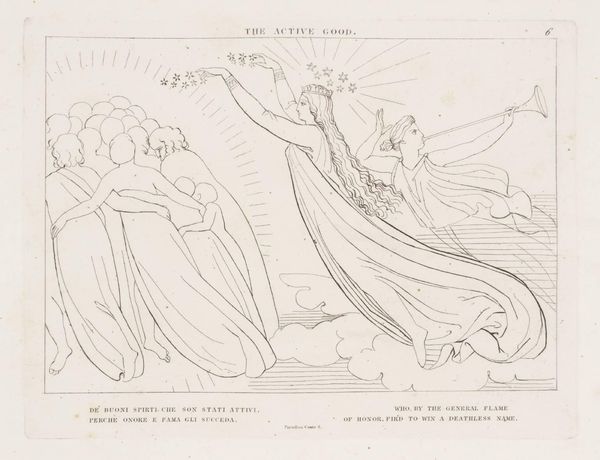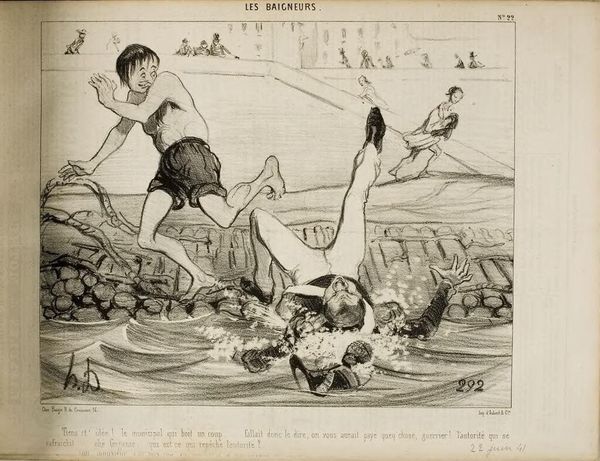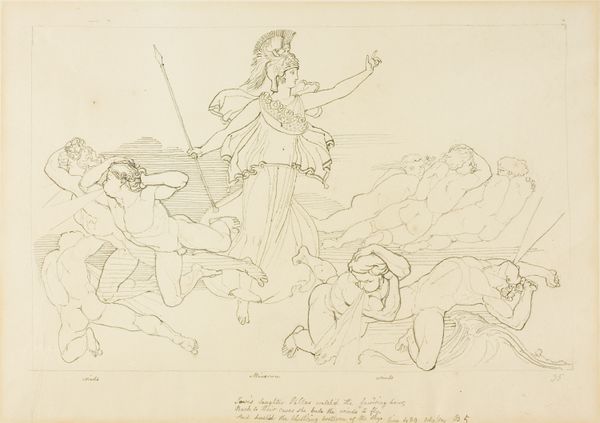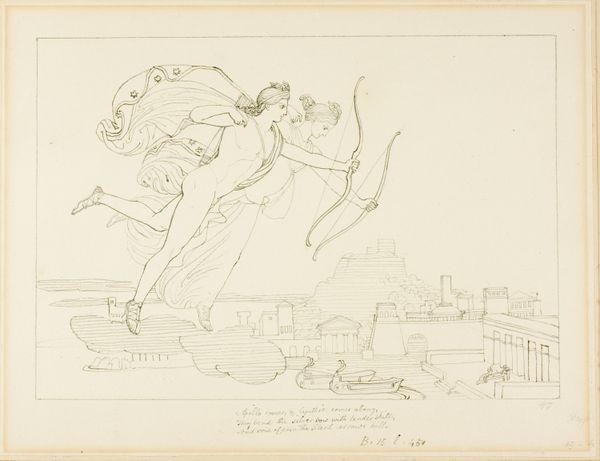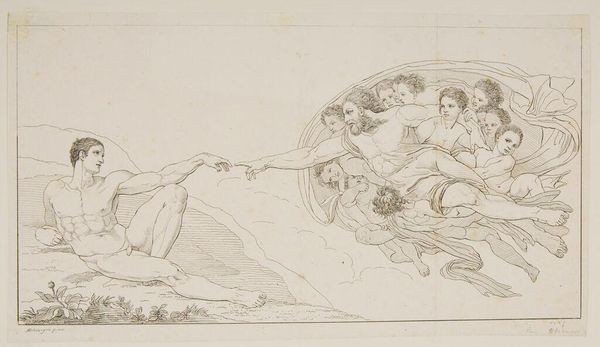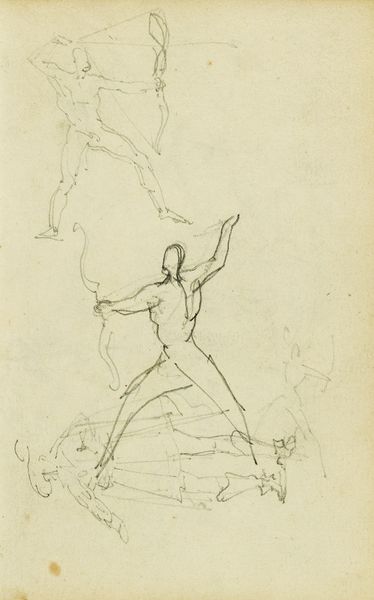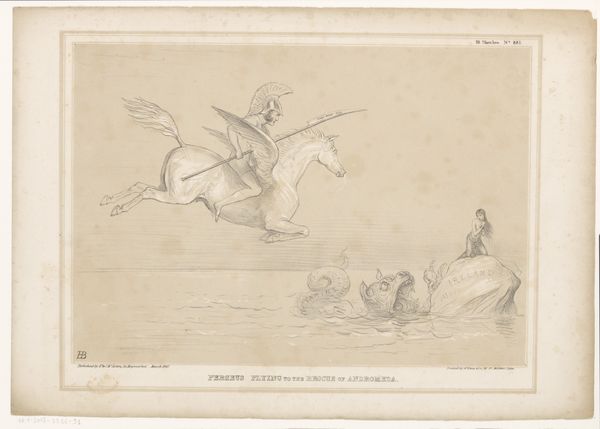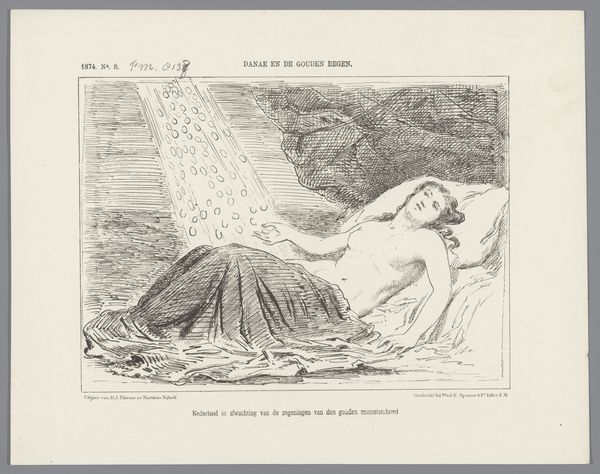
Dimensions: image: 174 x 294 mm
Copyright: CC-BY-NC-ND 4.0 DEED, Photo: Tate
Editor: This delicate line drawing by John Flaxman, titled "Leucothea Preserving Ulysses," depicts a scene of rescue at sea. There's a sense of classical heroism but also vulnerability. What symbols strike you most powerfully in this piece? Curator: The veil offered by Leucothea is key. Veils often signify transitions, concealment, but also revelation. Here, it's a liminal object, a bridge between mortal peril and divine intervention. It echoes ancient rituals of protection and rebirth. Editor: Rebirth… that makes sense given Ulysses' journey. So, the veil represents more than just physical safety? Curator: Precisely. Consider the cultural memory embedded in Ulysses' struggle – the archetypal hero facing trials. Leucothea’s veil isn’t merely a life preserver; it's a visual echo of hope, a tangible manifestation of the divine's enduring compassion for humanity. Editor: That really adds another layer to the work. I hadn’t considered how loaded the image of a veil could be. Curator: Flaxman uses simplicity to amplify symbolism. The starkness allows us to focus on those key motifs and our cultural understanding of them. Editor: Thanks for illuminating those details. I see it so differently now.
